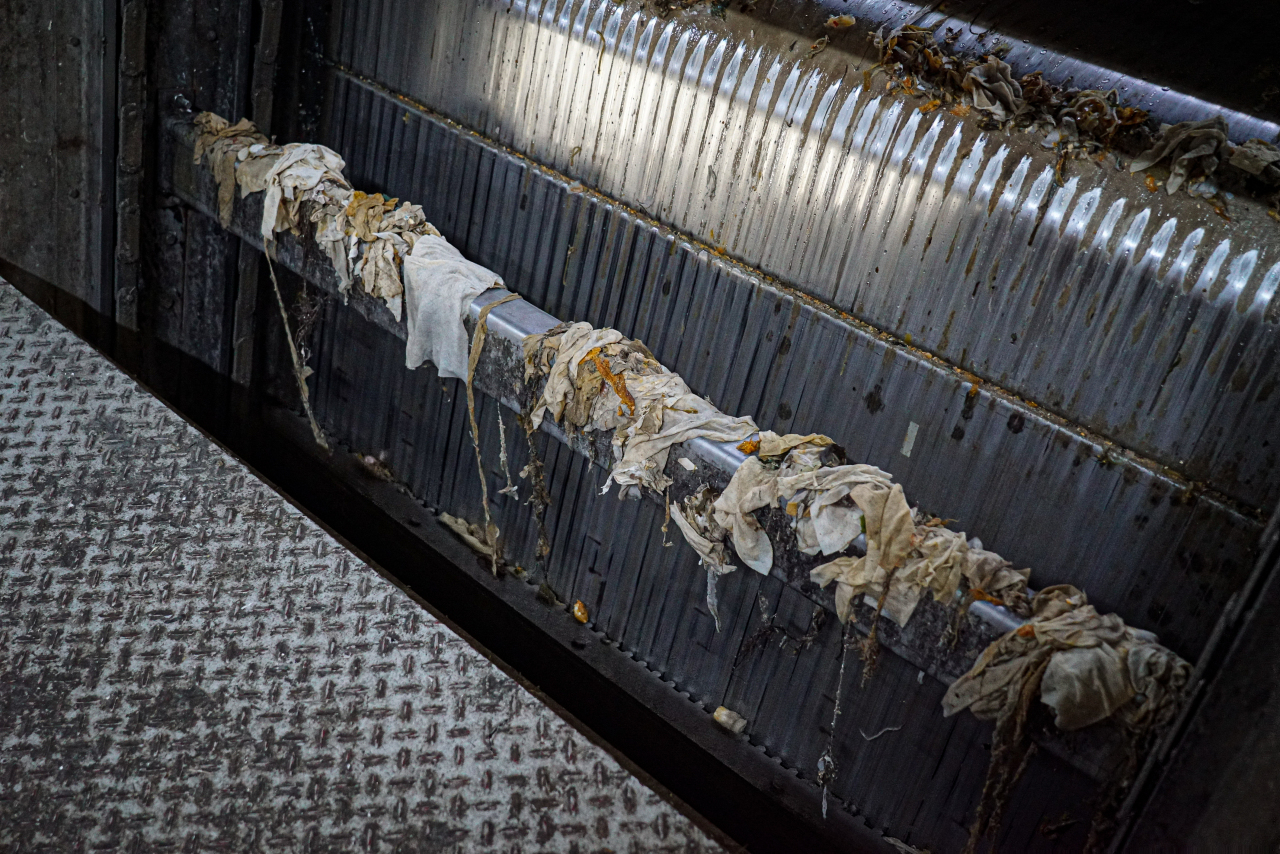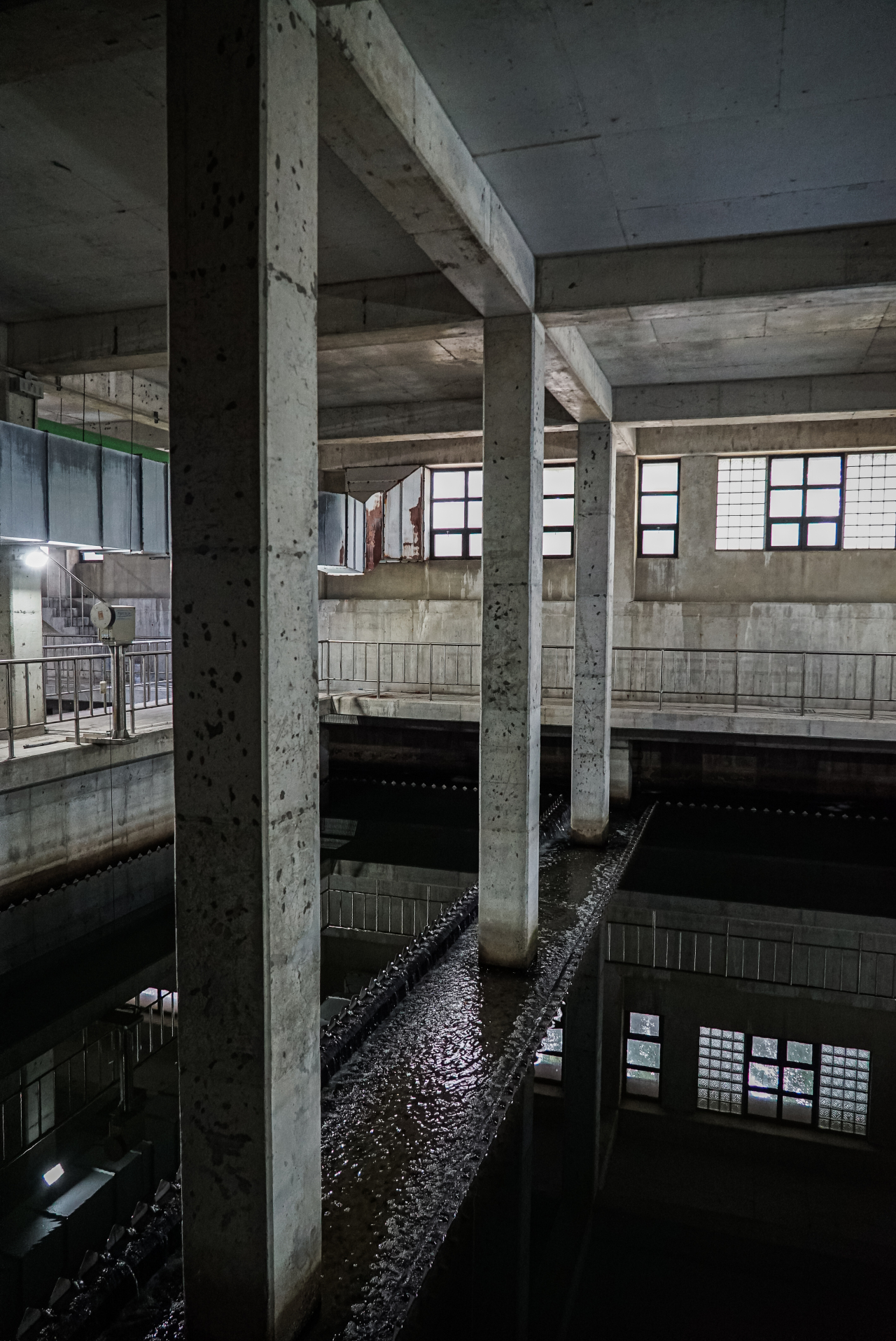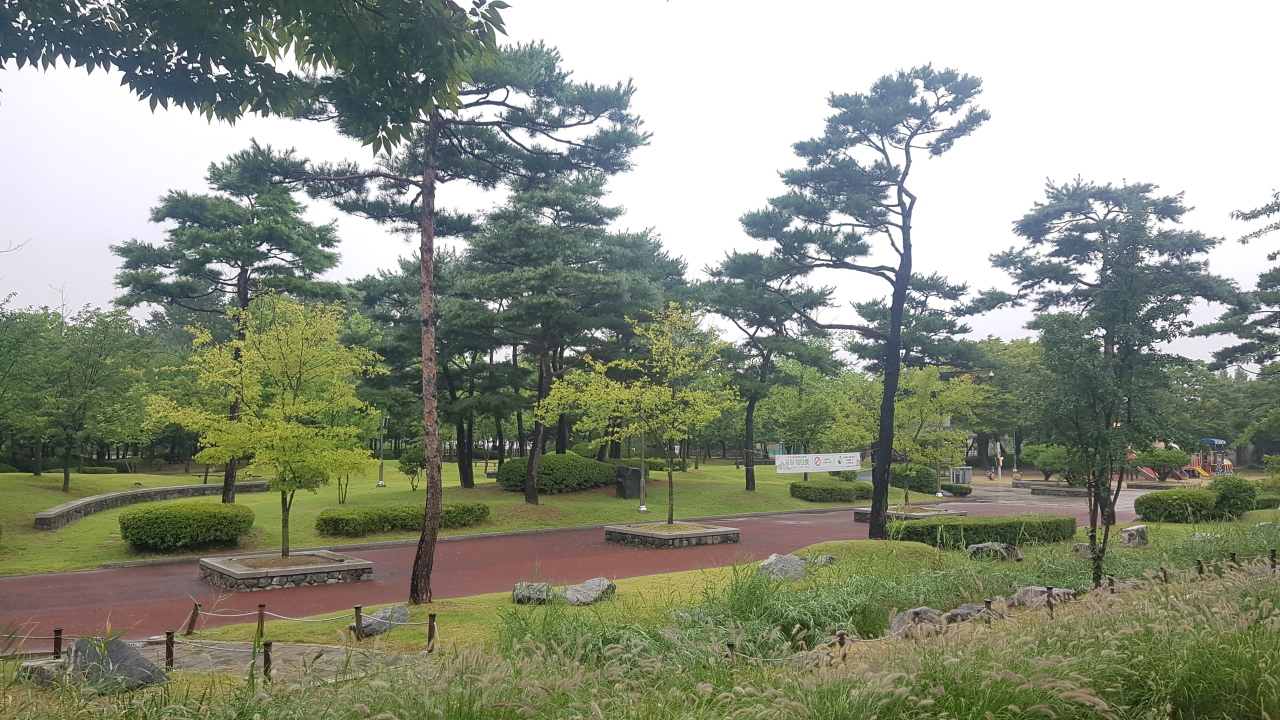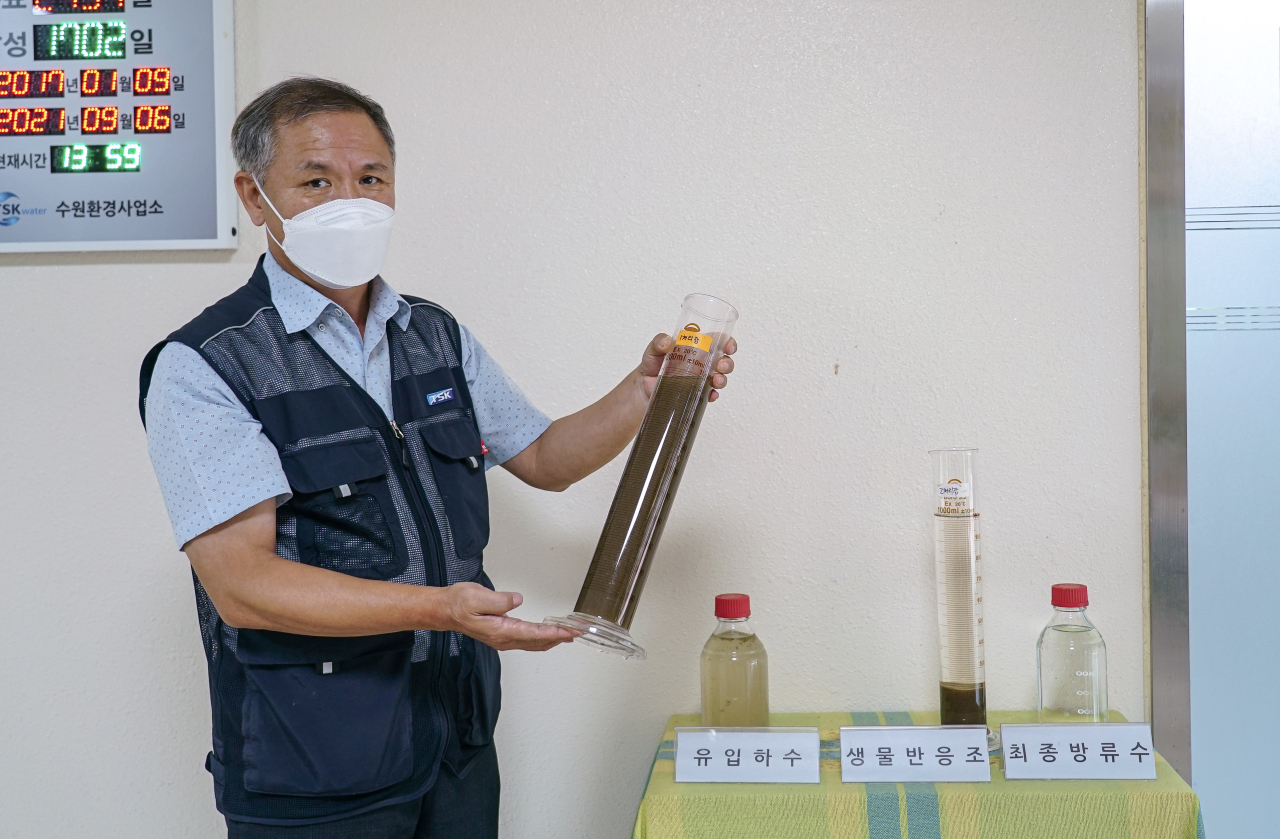[From the Scene] Korea’s silent battle against urban sewage
Chief of water treatment center in Suwon says intensifying urbanization makes job more difficult than ever before
By Kim Byung-wookPublished : Sept. 15, 2021 - 16:00

Everything that goes down the drain in Suwon, Gyeonggi Province, a city of 1.25 million people, ends up in the Suwon Environment Affairs Agency.
Every day, as much as 520,000 cubic meters of wastewater is filtered and purified at two water treatment facilities there -- one under and one above the ground -- and is then discharged into the river that leads to South Korea’s west coast.
Earlier this month, The Korea Herald visited the underground facility whose operation is commissioned to local waste management firm TSK.
Every day, as much as 520,000 cubic meters of wastewater is filtered and purified at two water treatment facilities there -- one under and one above the ground -- and is then discharged into the river that leads to South Korea’s west coast.
Earlier this month, The Korea Herald visited the underground facility whose operation is commissioned to local waste management firm TSK.

The tour began in a dimly lit basement, which surprisingly smelled normal -- nothing unpleasant. A giant washing machine resembling a rectangular submarine with circular windows sat at one side of a gray cement wall. Through the windows, bubbles were boiling furiously.
“The wastewater is going through a chemical treatment to get rid of the smell. The whole facility is underground so we can control the ventilation and the odor,” said Ryu Myung-gu, chief of the facility that is capable of treating 300,000 cubic meters of wastewater per day.
Past the submarine, purified water droplets fell into dozens of square catchment areas, gently making ripples on the surface. The scenery almost felt romantic, as if pearls were gracefully diving into a black hole.
Reaching the ground floor, that thought quickly evaporated. A repulsive stench hung thick in the air as a filtering machine was spitting out what would seem like the devil’s vomit -- a mishmash of toilet paper, hair and food waste all smothered in fecal matter. Thankfully the facility seems to be able to keep the smell under control, otherwise 300,000 golfers wouldn’t be visiting the outdoor driving range next to the facility every year.
“The wastewater is going through a chemical treatment to get rid of the smell. The whole facility is underground so we can control the ventilation and the odor,” said Ryu Myung-gu, chief of the facility that is capable of treating 300,000 cubic meters of wastewater per day.
Past the submarine, purified water droplets fell into dozens of square catchment areas, gently making ripples on the surface. The scenery almost felt romantic, as if pearls were gracefully diving into a black hole.
Reaching the ground floor, that thought quickly evaporated. A repulsive stench hung thick in the air as a filtering machine was spitting out what would seem like the devil’s vomit -- a mishmash of toilet paper, hair and food waste all smothered in fecal matter. Thankfully the facility seems to be able to keep the smell under control, otherwise 300,000 golfers wouldn’t be visiting the outdoor driving range next to the facility every year.

Ryu, as if immune to the smell, fervently explained how water treatment has gotten more difficult in the past years.
Many people have a garbage disposal installed in the sink -- many of them illegally -- sending food waste straight down the drain. More own pets, and their feces are flushed down the toilet as well.
“All of these are making wastewater more toxic,” he said.
Many people have a garbage disposal installed in the sink -- many of them illegally -- sending food waste straight down the drain. More own pets, and their feces are flushed down the toilet as well.
“All of these are making wastewater more toxic,” he said.

According to the official, the facility is designed to process 160 milligrams of organic waste in every liter of water. However these days, the facility faces densities as high as 500 milligrams per liter.
In such cases, the facility blows extra air into the organic wastewater to give a boost to microorganisms so they can break down organic waste such as fecal matter, detergent, soap, fat, grease and food particles faster.
TSK’s underground facility, constructed in 2005, has undergone a series of upgrades to tackle the excessive wastewater becoming more toxic every day.
According to a recent report released by the Environment Ministry, the density of organic wastewater spiked from 128.2 milligrams per liter in 2009 to 162.1 milligrams in 2018 at public water treatment facilities.
However, most of the water treatment centers, built in the 1990s and 2000s, are becoming too worn down to tackle them.
By 2030, nearly half of the nation’s public water treatment centers, 334 of them, will be more than 25 years old. Of them, 191 will be more than three decades old.
Worrisome signs are coming already. In 2014, there were 202 cases where water treatment centers failed to meet discharge standards. In 2018, that jumped to 288 cases.
The real water treatment crisis, however, is happening at the coastlines, not cities, Ryu said.
For small water treatment centers on the coast, processing the organic wastewater is a headache. In summer, the amount of wastewater soars with the convergence of tourists, overwhelming the facilities’ capacities. Eventually, unprocessed wastewater is discharged without due process.
“In winter, when tourists are all gone, there isn’t enough wastewater to feed to microorganisms. Without food, the microorganisms can’t thrive, and therefore can’t properly break down the wastewater,” he said.
According to a study conducted by the Korea Maritime Institute, Korea discharges 43.5 percent of its organic wastewater in coastal areas.
The study further indicates that this unfiltered organic wastewater flows to the ocean, where fish farms are located.
From 2015 to 2019, Korea witnessed an average of 1,115 patients who had norovirus food poisoning in a year, government data showed. Consumption of contaminated shellfish accounted for most of the cases.
In such cases, the facility blows extra air into the organic wastewater to give a boost to microorganisms so they can break down organic waste such as fecal matter, detergent, soap, fat, grease and food particles faster.
TSK’s underground facility, constructed in 2005, has undergone a series of upgrades to tackle the excessive wastewater becoming more toxic every day.
According to a recent report released by the Environment Ministry, the density of organic wastewater spiked from 128.2 milligrams per liter in 2009 to 162.1 milligrams in 2018 at public water treatment facilities.
However, most of the water treatment centers, built in the 1990s and 2000s, are becoming too worn down to tackle them.
By 2030, nearly half of the nation’s public water treatment centers, 334 of them, will be more than 25 years old. Of them, 191 will be more than three decades old.
Worrisome signs are coming already. In 2014, there were 202 cases where water treatment centers failed to meet discharge standards. In 2018, that jumped to 288 cases.
The real water treatment crisis, however, is happening at the coastlines, not cities, Ryu said.
For small water treatment centers on the coast, processing the organic wastewater is a headache. In summer, the amount of wastewater soars with the convergence of tourists, overwhelming the facilities’ capacities. Eventually, unprocessed wastewater is discharged without due process.
“In winter, when tourists are all gone, there isn’t enough wastewater to feed to microorganisms. Without food, the microorganisms can’t thrive, and therefore can’t properly break down the wastewater,” he said.
According to a study conducted by the Korea Maritime Institute, Korea discharges 43.5 percent of its organic wastewater in coastal areas.
The study further indicates that this unfiltered organic wastewater flows to the ocean, where fish farms are located.
From 2015 to 2019, Korea witnessed an average of 1,115 patients who had norovirus food poisoning in a year, government data showed. Consumption of contaminated shellfish accounted for most of the cases.







![[KH Explains] How should Korea adjust its trade defenses against Chinese EVs?](http://res.heraldm.com/phpwas/restmb_idxmake.php?idx=644&simg=/content/image/2024/04/15/20240415050562_0.jpg&u=20240415144419)











![[Today’s K-pop] Stray Kids to return soon: report](http://res.heraldm.com/phpwas/restmb_idxmake.php?idx=642&simg=/content/image/2024/04/16/20240416050713_0.jpg&u=)